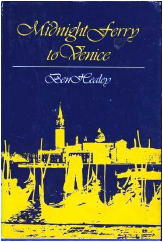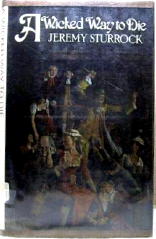November 2007
Monthly Archive
Fri 30 Nov 2007
I was working in Part 4 last week. These are consecutive entries in the S’s.
SHEPPARD, STEPHEN. 1945- . Ref: CA. Born in England. Actor & painter; author of three novels included in the (Revised) Crime Fiction IV, including the one cited below.
Monte Carlo. TV movie: CBS, 1986 (scw: Peter Lefcourt; dir: Anthony Page)
SMITH, CRAIG (BRIAN). 1947- . Note: Separate this entry from the one following; they are two different authors. Besides the title below, his only entry in the (Revised) Crime Fiction IV, this Craig Smith was the screenwriter for three crime films made between 1996 and 2002.
Ladystinger. Crown, US, hc, 1992. Setting: New Orleans, Jamaica. (Add the latter.) TV movie: Showtime, 1993, as Scam (scw: Craig Smith; dir: John Flynn). Nominated for an Edgar in 1993 as Best First Novel. [A mistress of the scam may get herself double-looped by her own chicanery.]
SMITH, CRAIG (S.) 1950- . Ref: CA. Ph.D. in philosophy from the University of Southern Illinois; lives in Switzerland. Note: Separate this entry from the one preceding; they are two different authors.
Silent She Sleeps. Heinemann, UK, hc, 1997. US title: The Whisper of Leaves. Setting: Illinois; academia. [Innocent man is framed by corrupt cop.]
_The Whisper of Leaves. Southern Illinois University Press, pb, 2002. US title of Silent She Sleeps.
SMITH, WILBUR (ADDISON)
Wild Justice. TV movie: Syndicated, 1993. Also released as Covert Assassin and as Dial. (scw: J. H. Carrington; dir: Tony Wharmby)
SOHMER, STEVE
Favorite Son. TV movie [mini-series]: NBC, 1988 (scw: Steve Sohmer; dir: Jeff Bleckner)
SPECHT, ROBERT. 1928-1997. Ref: CA. Editor; free-lance TV writer and story editor. Of two novels written, one is included in the (Revised) Crime Fiction IV. See below. This constitutes the author’s complete entry.
The Soul of Betty Fairchild. St. Martin’s, hc, 1991. Setting: South Carolina. Add TV movie: NBC, 1997, as NightScream (scw: Eugenia Bostwick-Singer, Raymond Singer, Gary Tieche; dir: Noel Nosseck). [Twenty-four years after Betty Fairchild is murdered, a young woman shows up who is identical to her in appearance and behavior, and seems to suffer from multiple personalities.]
SPEIGHT, RICHARD (DOBBS). 1940- . Trial lawyer living in Nashville, TN. His son, Richard Speight Jr., is an actor currently [2007] in a recurring role on the TV show Jericho. Author of two books listed in the (Revised) Crime Fiction IV, one of which is cited below.
Desperate Justice. TV movie: ABC, 1993, as A Mother’s Revenge; also released as Desperate Justice (scw: John Robert Bensink; dir: Armand Mastroianni)
SPROUL, KATHLEEN. 1903?-1977? Author of five detective novels included in the (Revised) Crime Fiction IV. Series sleuth Dick Wilson appears in the four published by Dutton between 1932 and 1935; covers for one of these is shown below. Her fifth and final mystery is listed immediately thereafter.
Death Listened In. Phoenix Press, hc, 1946. Add setting: Midwest. Said Anthony Boucher in the San Francisco Chronicle: “Passable enough up to the ending, which hinges upon a device of such monstrous improbability that it makes Buck Rogers look strictly scientific.”
Fri 30 Nov 2007
Posted by Steve under
Characters ,
Covers1 Comment
The cover artist is Roger Roth, who is perhaps best known for his detailed illustrations for children’s books — but that’s not all he’s done:
IPL. Hodder & Stoughton, UK, hc, 1930. Doubleday Doran (Crime Club), US, hc, 1931. Also published as: The Saint Closes the Case, Sun Dial Press, hc, 1941; paperback reprint: Fiction K103, 1967 [TV series tie-in with Roger Moore cover]. And as: The Saint and the Last Hero, Avon #544, pb, 1953. Other paperback reprints, under original title: Ace Charter, February 1982; International Polygonics, November 1988.
From the back cover:
How Simon Templar makes the acquaintance of arch-villain Dr. Rayt Marius, destroys a dangerous death ray, and thereby saves the world from catastrophe and a second Great War.
Business as usual — for the Saint.
From inside the front cover:
‘My name is Templar — Simon Templar.’
SIMON TEMPLAR: a/k/a The Saint, the Happy Highwayman, the Brighter Buccaneer, the Robin Hood of Modern Crime.
DESCRIPTION: Age 31. Height 6 ft., 2 in. Weight 175 lbs. Hair black, brushed straight back. Complexion tanned. Bullet scar through upper left shoulder; 8 in. scar on right forearm.
SPECIAL CHARACTERISTICS: Always immaculately dressed. Luxurious tastes. Lives in most expensive hotels and is connoisseur of food and wine. Carries firearms and is expert knife thrower. Licensed air pilot. Speaks several languages fluently. Known as “The Saint” from habit of leaving drawing of skeleton figure with halo at scenes of crimes.
Thu 29 Nov 2007
Posted by Steve under
CoversNo Comments
Cover art credited to John Jinks, the overall design to Barbara Buck.
MYSTERIOUS PRESS. Hardcover edition, November 1988. Paperback reprint, November 1989. The same cover art was used on both editions.
From the back cover:
Andy Flanagan is an angry man. A one-armed veteran of the Vietnam war, he lives on a leaky boat at L.A.’s Old Fleet Marina. Now the marina is to be sold, and Flanagan — along with a hundred others — is to be ousted, with no place to go.
His protests ignored, he phones the marina’s wealthy owner, an importer named Le Van Minh, and arranges a meeting. But Le never shows — until Flanagan stumbles over his corpse on the dock and is arrested fro murder.
Public Defender Tracy Davis thinks Flanagan is innocent, and hires Dave Brandstetter to find the real killer. Brandstetter soon finds himself on the unseen border where American and Asian cultures meet and clash. Other wealthy Vietnamese have met violent ends recently. What role does the gang lord Don Pham play? What did a black street runner see that he shouldn’t? What angry secret do the young people of Le’s family share between them?
Obedience is a story of ancient verities trashed by 20th-century greed and corruption. Never before has Dave Brandstetter ventured into so alien a world, and rarely has his dogged search for the truth put his life in such danger.
“Excellent.” — Alfred Hitchcock’s Mystery Magazine
“Fast paced … Hansen readers should delight in it.” — Publishers Weekly
Wed 28 Nov 2007
I’ve been working with Part 9 yesterday and today, this time more or less in the A’s, but things quickly branched out from there:
ADAMS, FRANK R(AMSEY). 1883-1963. Chicago reporter; writer of songs and screen plays. Also the author of eight mystery and adventure novels included in the (Revised) Crime Fiction IV, two marginally. One of these was reprinted in paperback by Dell in 1950 as western fiction; see below. One other book by Adams was purely a western: Gunsight Ranch (Doubleday Doran, hc, 1939).
Arizona Feud. Doubleday Doran, US, hc, 1941. Harrap, UK, 1944. “The homecoming of a young Arizonian revives a blood feud three generations old.”
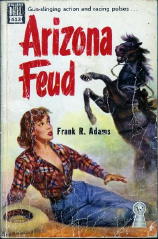
ANDREAE, PERCY. 1858-1924. Confirm birth date and add date of death. Influential anti-prohibitionist in the US in the 1900s. Between 1894 and 1902, the author of five novels included in the (Revised) Crime Fiction IV, including the two below. Two of the other titles are indicated as being only marginally crime-related.
Stanhope of Chester. Smith Elder, UK, hc, 1894. Rand McNally, US, pb, 1896. The Bookman (Vol. III, No. 1, March 1896): “The most notable ghost story that has appeared for many years.”
The Vanished Emperor. Ward Lock, UK, hc, 1896. Rand McNally, US, 1896. Alternate history novel set in Europe. “Sir John Templeton solves the case of the missing German emperor.”
ANDREWS, CAROLYN. Pseudonym of Carolyn Hanlon, 1940- , q.v. Add real name and year of birth. Under this pen name, a writer of romance fiction, with one title included in the (Revised) Crime Fiction IV. See below. [Other pen name: Cara Summers; not used for criminous fiction before the year 2000.]
The Marriage Curse. Harlequin, pb, 1996. [A lovely innkeeper determined to solve the mystery surrounding her resident ghost clashes with her overly solicitous landlord.]
ARCHER, MARGARET. Author of six crime novels listed in the (Revised) Crime Fiction IV, including the two below. Published in the UK between 1945 and 1953, none appeared in the US.
Gull Yard. Jarrolds, UK, hc, 1947. [Nellie Greene, the new governess to the Rev. Arthur Cagg’s household, arrives in London’s Gull Yard during early Victorian times.]
The Silent Sisters. Jarrolds, UK, hc, 1950. Add setting: England.
ARMSTRONG, RAYMOND. Pseudonym of Norman (Harold) Lee, 1898-1964, q.v. Under this pen name, the author of 13 mystery novels included in the (Revised) Crime Fiction IV, all published only in the UK between 1947. The series characters who appeared in these books include J. Rockingham Stone, Inspector Dick Mason, and Laura Scudamore, sometimes individually and on occasion, all three in the same books. It must be Laura Scudamore who is known as “The Sinister Widow,” as the phrase is part of the title in all seven books in which she appears.
ARNOLD, JUDITH. Pseudonym of Barbara J. Keiler, 1953- , q. v. Add real name and year of birth. Lives in a small town near Boston. Under this pen name, a writer of romance fiction with two titles in the (Revised) Crime Fiction IV, one marginally. See below. [Other pen names: Ariel Berk, Thea Frederick; neither was used for criminous fiction through the year 2000.]
-Legacy of Secrets. Harlequin, pb, 1998. Setting: Louisiana. [Book 11 in the Delta Justice series.]
A Stranger’s Baby. Harlequin, pb, 1996. Setting: Maryland.
CORRIGAN, MARK. Pseudonym of Norman (Harold) Lee, 1898-1964, q.v. Under this pen name, described online as the author of “30 mystery/detective novels with series character Mark Corrigan of US Intelligence who, with sidekick Tucker Maclean, has first-person romantic adventure thriller experiences in exotic locations.” Two of these are shown below.
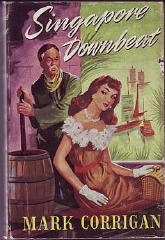
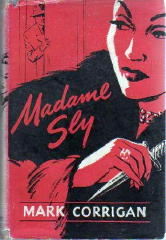
HANLON, CAROLYN. 1940- . Pseudonym: Carolyn Andrews, q.v. Add this entry with the author’s real name and year of birth. [Other pen name: Cara Summers; not used for any criminous fiction before the year 2000.]
HOBART, ROBERTSON. Pseudonym of Norman (Harold) Lee, 1898-1964, q.v. Under this pen name, the author of four mystery novels included in the (Revised) Crime Fiction IV. Series character Inspector Grant Vickary appears in two of them; the setting for each is Australia. One of these is shown below:
KEILER, BARBARA J. 1953- . Pseudonym: Judith Arnold, q.v. Add this entry with the author’s real name and year of birth. [Other pen names: Ariel Berk, Thea Frederick; neither was used for criminous fiction through the year 2000.]
LEE, NORMAN (HAROLD). 1898-1964. Correction of dates & addition of middle name. Add as pseudonyms: Raymond Armstrong, Mark Corrigan, Robertson Hobart, qq.v. Also add the titles indicated with a (*) below. The following is now the complete entry in the (Revised) Crime Fiction IV for the author under his own name. (Others novels appear to be adventure or sea stories only.)
-Deputy Wife. Mitre, UK, pb, 1946.
The “Four Winds” Mystery. Mitre, UK, pb, 1946.
Peril at Journey’s End. Foster, UK, pb, 1947.
(*) Ship of Adventure. Skilton, UK, 1948. Setting: Ship.
(*) The Terrified Village. Lutterworth, UK, hc, 1947. Setting: England, 1800s. Subtitle: A Tale of the Kent and Sussex Smugglers. [Historical tale based on the exploits of the Zack o’Lantern gang, in which the son of a London lawyer falls in with smugglers.]
LEE, NORMAN. 1905-1962. Delete this entry. This eliminates an apparent second Norman Lee whose presumed pseudonyms are now correctly attributed in the entry above.
Wed 28 Nov 2007
This is the movie tie-in edition, with a photo of Elizabeth Montgomery taken from the film. The film was in black-and-white, though, and this cover is in color:
From the front cover:
A raw, renegade kid with enough guts to take on the whole damned underworld — A beautiful girl with enough innocence to believe in him.
From the back cover:
They picked their man, and taught him well.
All the right names.
All the right tricks.
All the ways to kill a man and never leave a trace.
And when they had a fine, smooth precision tool for death, they gave him the name of a gangland titan and turned him loose in the underworld empire the mobster had once owned. And they said: Take it, Johnny. Get it back. It’s yours.
GOLD MEDAL k1343. Second printing, September 1963. [above] First printing: Gold Medal 881, 1959. I don’t happen to have at hand my copy of the first printing, but I found a cover elsewhere on the Internet. Both editions are scarce. On ABE when I checked just now, there were 9 copies of the first printing, and two of the second.
The movie was simply titled Johnny Cool (United Artists, 1963). Henry Silva played the title role.
To read Gold Medal aficionado Bill Crider’s take on both the book and the movie, go here.
Tue 27 Nov 2007
I was working in Part 9 yesterday, primarily in the L’s, when I came across a pair of authors who are twin sisters, a fact that hadn’t been pointed out before.
BURFORD, PAMELA. 1954- . Add date of birth and married name: Pamela Burford Loeser, q.v. Twin sister of Patricia Ryan, q.v. Under her maiden name, the author of many romance novel, primarily for Harlequin and its various imprints. Two of them are included in the (Revised) Crime Fiction IV. See below.
His Secret Side. Harlequin, pb, 1996. Silhouette, UK, pb, 1998. [Investigating her best friend’s murder in Vermont, the last thing a woman expects is to be both attracted to and fearful of the small town’s doctor.]
Twice Burned. Harlequin, pb, 1997. Silhouette, UK, pb, 1998. Setting: New York. [A young woman determined is forced to accept help from an FBI agent who wants to keep her locked away and safe.]
HOPWOOD, BRENDA CECILIA. 1878-1959. Pseudonym: Patrick Leyton, q.v.
LEYTON, PATRICK. Add: pseudonym of Brenda Cecilia Hopwood, 1878-1959, q.v. Under this name, the author of 20 crime thrillers published in England between 1925 and 1948. Two were reprinted in the US; one is shown below. Note: This discovery was made by John Harrington, who has also found evidence that around 1919 the author legally changed the family name from Gregge-Hopwood to Hopwood only.
LIPKE, KAY. 1896- . Full name: Kathleen Bellows Lipke. Add year of birth. Author of one hard-to-find mystery novel included in the (Revised) Crime Fiction IV. See below. Another novel, Life Is for Living, appeared in the Philadelphia Inquirer book section on December 27, 1936; it appears to have criminous content.
Rain on the Roof. Dial Press, hc, 1931. Methuen, UK, hc, 1932. Setting: California.
LOEWENKOPF, SHELLY (ALAN). ca.1931- . Add middle name and tentative year of birth. Co-author of two books in the long-running Nick Carter paperback series, both included in the (Revised) Crime Fiction IV. See below.
_Arms of Vengeance [as by Nick Carter]. Co-authored by Dennis Lynds. Jove, pb, 1989. [#255]
_Law of the Lion [as by Nick Carter]. Co-authored by Dennis Lynds. Jove, pb, 1989. [#252]
LOESER, PAMELA BURFORD. 1954- . Add date of birth and married name of Pamela Burford, q.v.
RYAN, PATRICIA (née BURFORD). 1954- . Add date of birth and maiden name. Twin sister of romantic fiction writer Paula Burford, q.v. Also a writer of romances, two of them included in the (Revised) Crime Fiction IV. See below. As P. B. Ryan, later the author of a series of post-Civil War historical mysteries featuring Boston governess Nell Sweeney, the first being Still Life with Murder (Berkley, pb, 2003).
A Burning Touch. Harlequin, pb, 1996. Mills, UK, pb, 1996. Setting: New Jersey. [India Cook offers her services to the police department; detective Jamie Keegan knows all about con artists.]
Silken Threads. Topaz, hc, 1999. Setting: London, 1100s. [Graeham Fox is on a secret mission: rescuing his lord’s illegitimate daughter from the clutches of her abusive husband.]
Mon 26 Nov 2007
FIRST YOU READ, THEN YOU WRITE
by Francis M. Nevins
In the first edition of Cornell Woolrich’s The Bride Wore Black (1940), each of the novel’s five parts opens with a motto, whose respective sources are Rodgers & Hart, Guy de Maupassant, Cole Porter, and de Maupassant twice more. In the first paperback edition (Pocket Books #271, 1945), the first and third of these are dropped and replaced by lines attributed respectively to Poe and the social philosopher Herbert Spencer. The Poe couplet at the beginning of Part One reads as follows:
 How silent is the night — how clear and bright!
How silent is the night — how clear and bright!
I nothing hear, nor aught there is to hear me.
Not long ago an Italian author who is preparing an anthology of essays on Woolrich emailed me to ask if I knew the source of that couplet, which doesn’t appear in any known poem of Poe’s.
Splitting the first line into its component parts and calling on trusty Google produced one and only one hit. According to www.authspot.com, the quoted matter comes from the first verse of The Murderer, which is billed as an unpublished poem by Edger (sic) Allen (sic) Poe, rewritten (with many other misspellings) by one coyote103 and posted last March. But lines I quoted above must have been published before 1945 or whatever copyright-paranoid munchkin at Pocket Books substituted them for Woolrich’s Rodgers & Hart quotation couldn’t have known about them.
A later email from my Italian correspondent solved the problem. The quoted couplet is part of a 70-line fragment first published almost forty years after Poe’s death in George W. Conklin’s Handy Manual (Chicago, 1887). No scholar today believes they were written by Poe but the first three lines ( “Ye glittering stars! How fair ye shine tonight/And O, thou beauteous moon! Thy fairy light/Is peeping thro those iron bars so near me”) are quoted in Thomas Ollive Mabbott’s definitive edition of Poe’s poetry (Harvard University Press, 1969).
How Pocket Books came across them more than a quarter century earlier remains a mystery.
 The year The Bride Wore Black first came out is commonly considered the year when film noir came into being. But the more movies I see from the years immediately preceding 1940, the more I tend to question that consensus. Turner Classic Movies recently and for the first time ran Let Us Live (Columbia, 1939), directed by John Brahm and starring Henry Fonda and Maureen O’Sullivan.
The year The Bride Wore Black first came out is commonly considered the year when film noir came into being. But the more movies I see from the years immediately preceding 1940, the more I tend to question that consensus. Turner Classic Movies recently and for the first time ran Let Us Live (Columbia, 1939), directed by John Brahm and starring Henry Fonda and Maureen O’Sullivan.
The storyline is pure Woolrich — perverse coincidence and police pressure on witnesses lead to two guys down on their luck being falsely convicted for bank robbery and murder and precipitate a race by the desperate fiancee of one of them to find the real criminals before it’s too late — and the visuals are as shadowy and menacing as anything in the downbeat classics of the Forties. If this isn’t film noir, toads fly.
 Devotees of films noir and their fictional sources will want to check out Kevin Johnson’s The Dark Page: Books That Inspired American Film Noir, 1940-1949. In this coffee-table book, recently published by Oak Knoll Press, each right-hand page is devoted to a lush full-color reproduction of the dust-jacket from one of the novels or story collections which was the source, sometimes very remotely, for a film noir from the Forties. Each left-hand page contains a technical description of the jacket and brief comments on the relevant book and film.
Devotees of films noir and their fictional sources will want to check out Kevin Johnson’s The Dark Page: Books That Inspired American Film Noir, 1940-1949. In this coffee-table book, recently published by Oak Knoll Press, each right-hand page is devoted to a lush full-color reproduction of the dust-jacket from one of the novels or story collections which was the source, sometimes very remotely, for a film noir from the Forties. Each left-hand page contains a technical description of the jacket and brief comments on the relevant book and film.
Mr. Johnson, the owner of Baltimore’s Royal Books — whose website, www.royalbooks.com, is worth checking out — is working on a companion volume which will deal with the literary sources of various films noir released between 1950 and 1965. I understand he ll be present at NoirCon, which will be held in Philadelphia early in April. That website (www.noircon.com) is worth checking out too.
Our Poetry Corner guest star for today is A. H. Z. Carr. Anyone remember him? He was born in 1902 and his early stories appeared in Harper’s, Saturday Evening Post and other top general fiction magazines of the Thirties, but he first registered on mystery readers’ radar when his “The Trial of John Nobody” was published in Ellery Queen’s Mystery Magazine (November 1950).
 His fourth EQMM original, “Tyger! Tyger!” (October 1952), is perhaps the finest short crime story to deal centrally with poets and poetry. Malcolm Ridge, struggling to express his feelings about the Atomic Age, becomes prime suspect in the murder of the owner of a Russian restaurant in Greenwich Village and uses his skills as a poet not only to clear himself and identify the real killer but also to use the experience in conjuring up the exact words his poem-in-progress needed.
His fourth EQMM original, “Tyger! Tyger!” (October 1952), is perhaps the finest short crime story to deal centrally with poets and poetry. Malcolm Ridge, struggling to express his feelings about the Atomic Age, becomes prime suspect in the murder of the owner of a Russian restaurant in Greenwich Village and uses his skills as a poet not only to clear himself and identify the real killer but also to use the experience in conjuring up the exact words his poem-in-progress needed.
Carr died in October 1971, about six months after his Finding Maubee won the Edgar for best first novel of 1970. Starring in the much later film version, 1989’s The Mighty Quinn, was the young Denzel Washington.
Sun 25 Nov 2007
Posted by Steve under
CoversNo Comments
Cover art unidentified, although there are two P’s in the upper and lower portions of a boxed H to the left of the lady’s leg (her right). I’ve lightened the image slightly for a better overall look.
BANTAM. Simon & Schuster (Inner Sanctum), hardcover, 1945. Reprint hardcovers: Unicorn Mystery Book Club [four-in-one], 1946; World, 1947. Paperbacks: Armed Services Edition 914 [oblong binding]; Pocket 391, 1947; Bantam edition, June 1987.
From the front cover:
“Extra good.” — SATURDAY REVIEW
From the back cover:
dead girls have more fun
The reporter at her trial wrote: “Anna Marie St. Clair, convicted murderess of Big Joe Childers, seemed like a woman carved out of stone.”
A sentence of death by electrocution will do that to a murderess. The problem was, Anna had not, in fact, killed her lover. She’d been cruelly framed.
Then, at the eleventh hour, the true murderer confesses. Anna becomes a free woman. A free woman with a frightening plan. She blackmails the authorities into reporting her execution. Now the world at large, including those who had sent her up, thinks she fried.
Anna’s next step is to seek out gin-soaked, falling-in-love lawyer J. J. Malone. And with his exuberant approval, Anna sets out on a devilish trail of haunting revenge.
“The wildest series of adventures that Craig Rice has yet put on paper.” — THE NEW YORK TIMES
[FOLLOWUP COMMENTS] 11-26-07. The back cover fails to report that Craig Rice’s other pair of sleuths, Jake and Helene Justus, are in this book, a significant oversight, I would say.
As for me, I failed to report that there was a movie made of The Lucky Stiff, and the link will lead you to the IMDB page for it. Brian Donlevy played Malone, and Dorothy Lamour was Anna Marie St. Clair. Jake and Helene Justus were not in the movie, which does not seem to be available, either commercially or on the black market.
The book itself is part of the online George A. Kelley collection, where you’ll find a detailed write-up of the entire story. For much more about Craig Rice’s career in mystery fiction, mostly of the comic variety, check out Mike Grost’s website. Magnificent!
Sun 25 Nov 2007
I was working in Part 8 of the online Addenda this afternoon, primarily in the J’s, but as often happens, this required jumping around and filling in some of the other entries as well.
BECKE, (GEORGE) LOUIS. 1855-1913. Most sources suggest that his name at birth was George Lewis Becke. Australian author of many novels and stories about the South Pacific. To the 15 novels and collections included in the (Revised) Crime Fiction IV, add the following:
-The Mystery of the Laughlin Islands. With Walter (James) Jeffery, 1861-1922, q.v. Unwin, UK, hc, 1896. Setting: Ship.
HEALEY, BEN(JAMIN JAMES). 1908-1988. Add year of death. Pseudonyms: J. G. Jeffreys, Jeremy Sturrock, qq.v. Artist and designer in British film industry. Under his own name, the author of 12 mystery novels listed in the (Revised) Crime Fiction IV published in the UK between 1965 and 1981. Series characters: (1) artist Paul Hedley and(2) art thief Harcourt d’Espinal, who generally worked separately but appeared together in Last Ferry from the Lido (Robert Hale, 1981) aka Midnight Ferry to Venice (Walker, 1982). Four of the books were published in the US.
JEFFERY, WALTER (JAMES). 1861-1922. Add as a new author entry. Born in England; noted Australian writer & journalist. Co-author of one marginally crime-related title:
-The Mystery of the Laughlin Islands, with (George) Louis Becke, 1855-1913, q.v. Unwin, UK, hc, 1896. Setting: Ship.
JEFFREYS, J. G. Pseudonym of Ben(jamin James) Healey, 1908-1988, q.v. Add year of death. Other pseudonym: Jeremy Sturrock, q.v. The first seven adventures of Jeremy Sturrock of the Bow Street Runners, a series set in Regency times, were first published in the UK as by Sturrock; then in the US under the Jeffreys byline. One of these is shown below; an additional title, The Thistlewood Plot (Walker, 1987) appeared only in the US.
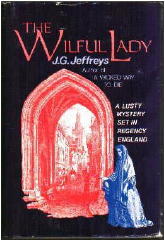
JILES, PAULETTE. 1943- . Ref: CA. Add as a new author entry. Born in Missouri; immigrated to Canada, 1969. Journalist, writer, memoirist, poet.
-Sitting in the Club Car Drinking Rum and Karma-Kola. Polestar, Canada, pb, 1986. Setting: Canada, train. A novella (104 pages) subtitled: A Manual of Etiquette for Ladies Crossing Canada by Train. Described as “a parody of the 1940s detective novels of Raymond Chandler and Dashiell Hammett, [the story] follows its heroine as she avoids the payment of $50,000 in overdue bills by fleeing across country.” Illustrated with the Dome Car floor plan.
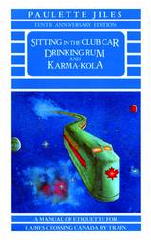
STURROCK, JEREMY. Pseudonym: Ben(jamin James) Healey, 1908-1988, q.v.. Add year of death. Other pseudonym: J. G. Jeffreys, q.v. The primary character in each of the books under this pen name was the same as the author’s, Jeremy Sturrock of the Bow Street Runners. A series set in Regency times, it displayed, says one online source, “a nice raunchy low-life vulgarity.” Seven books were published in the UK between 1972 and 1983; one of these is shown below. When published in the US the byline was given as J. G. Jeffreys. A final book appeared in 1987 only in the US.
Sun 25 Nov 2007
Posted by Steve under
Covers[5] Comments
First in a series of cover artwork, mostly paperbacks, and all from my collection. The only criterion for this one and ones to come: These are books that I’ve found pleasures in various ways in having them in hand to look at, up close and personal.
Artist: Kirwan:
BLACK LIZARD. First published as Down There, Gold Medal, 1956. Reprinted as Shoot the Piano Player, Grove Press (Black Cat), 1962. Black Lizard edition, 1987. Introduction by Geoffrey O’Brien. Filmed as Tirez sur le pianiste; adapted and directed by François Truffaut.
From the front cover (top):
“David Goodis is the mystery man of hardboiled fiction — the poet of the losers.”
— Geoffrey O’Brien,
Mystery Scene From the front cover (bottom):
Eddie was a piano man on the skids, about as far from the top as he could slide. Then he met a girl, the right girl, and she gave it all back to him. He’d kill anyone who came between them.
From the back cover:
Eddie had been a big shot one, a concert pianist at the top of his profession, able to fill Carnegie Hall whenever he chose to perform. His brothers were in a different business, however; they were thieves, killers. Until now he’d been able to avoid them, to live his life in his own way. But things were different now; they’d been different since his wife and career went out the window. He hit bottom fast.
Then this girl came along, and Eddie began the long, slow climb out of the gutter. When his brother Turley showed up Eddie knew it was bad news — he couldn’t say no to Turley, no matter how painful the consequences proved to be.
“Action and thrills!” — San Francisco Call Bulletin
“Goodis’s characters are not just hard-boiled, they’re pickled and then deep frozen … bad-dream Bogarts on the far ledge of existence.” — Mike Wallington
Next Page »
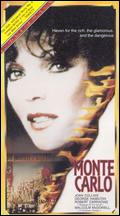
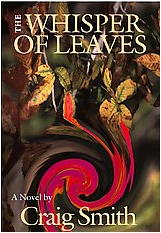
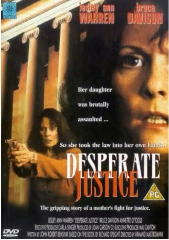
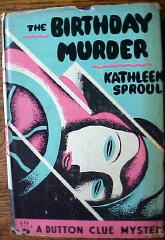
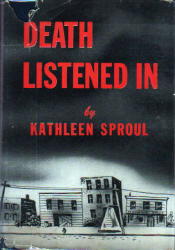



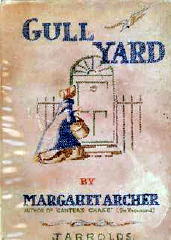
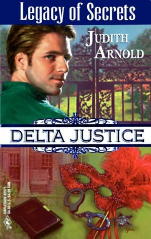


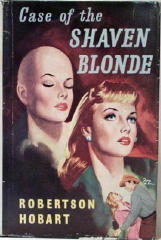



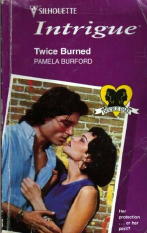
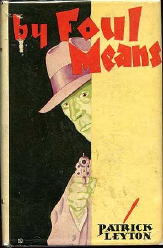
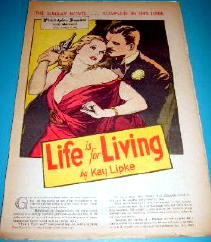

 How silent is the night — how clear and bright!
How silent is the night — how clear and bright! The year The Bride Wore Black first came out is commonly considered the year when film noir came into being. But the more movies I see from the years immediately preceding 1940, the more I tend to question that consensus. Turner Classic Movies recently and for the first time ran
The year The Bride Wore Black first came out is commonly considered the year when film noir came into being. But the more movies I see from the years immediately preceding 1940, the more I tend to question that consensus. Turner Classic Movies recently and for the first time ran  Devotees of films noir and their fictional sources will want to check out Kevin Johnson’s
Devotees of films noir and their fictional sources will want to check out Kevin Johnson’s  His fourth EQMM original, “Tyger! Tyger!” (October 1952), is perhaps the finest short crime story to deal centrally with poets and poetry. Malcolm Ridge, struggling to express his feelings about the Atomic Age, becomes prime suspect in the murder of the owner of a Russian restaurant in Greenwich Village and uses his skills as a poet not only to clear himself and identify the real killer but also to use the experience in conjuring up the exact words his poem-in-progress needed.
His fourth EQMM original, “Tyger! Tyger!” (October 1952), is perhaps the finest short crime story to deal centrally with poets and poetry. Malcolm Ridge, struggling to express his feelings about the Atomic Age, becomes prime suspect in the murder of the owner of a Russian restaurant in Greenwich Village and uses his skills as a poet not only to clear himself and identify the real killer but also to use the experience in conjuring up the exact words his poem-in-progress needed. 
